Date:-10th April 2015 -ASSOCHAM National Conclave on e-Commerce
Date : 10th April 2015 -ASSOCHAM National Conclave on e-Commerce
Inaugural Session
This session consisted of 8 panel members. While some members were required to speak individually, overall the group had a discussion flow together where all members got chance to speak and contributed to a fruitful session. The panel members were as follows:
|
S. No. |
Name |
Designation |
Organization |
Session Role |
|
1 |
Ms.Nirmala Sitharaman |
State Minister of Commerce & Industry |
Union Ministry |
Chief Guest |
|
2 |
Mr.D. S. Rawat |
Secretary General |
ASSOCHAM |
Opening Remarks |
|
3 |
Mr. Bikky Khosla |
Chairman |
ASSOCHAM, National Council on e- Commerce |
Welcome Address |
| CEO |
Tradeindia.com |
|||
|
4 |
Mr. Hemant Joshi |
Partner |
Deloitte India |
Theme Address |
|
5 |
Mr. Khalid Isar |
Country General Manager |
Alibaba.com |
Industry Address |
|
6 |
Mr.Latif Nathani |
Managing Director |
e-Bay |
Industry Address |
|
7 |
Mr.George N. Sibley |
Counsellor, Economic Affairs, Science and Technology and Environment, |
Embassy of the United States of America |
Keynote Address |
|
8 |
Mr. R Gandhi |
Deputy Governor |
Reserve Bank of India |
Guest of Honour |
The speaker who opened the session proper gave a very good insight about the way today’s youngsters have a different perspective compared to the earlier generations. He coined a term naming today’s youth as the –“BC Generation”. By BC he meant- Bio Clock. This generation does not have the time to wallow in and wait for the right moment. Instead it wants to pack in as much as possible within a short span of time and thus heavily influenced by the biological clock. The speaker gave the example of a young girl aged around 24 whom he met few days back and who was supposed to visit Goa on holiday for 5 days. Each of the supposed 15 meals over those 5 days have already been planned using Zomato and several other such apps. In response to the speaker’s question as to why such extensive pre-planning she apparently replied- ‘life is short’. This anecdotal incident actually reveals the great hurry that people are in these days and how several apps have created a need where there was none to pack in as much as possible.
Alibaba.com’s recent listing on the stock market in the USA has been seen as a success for the industry back home. The panel celebrated this event as a sign of things to come for the Indian e-commerce industry as reputation can only improve due to this.
Mr. Sibley, Counsellor from the US Embassy was among the major speakers of the event. He explained how the USA had reached a certain stage in its digital growth and India was fast catching up. Due to India’s vast population and especially the youth population, the country presents a unique and massive opportunity for e-commerce players to actively perform.
Another speaker mentioned how initially only books were purchased online as the trust factor was very high. The idea was that a book will be exactly the same on purchase as it will be when seen in an online store. Slowly other products started getting purchased online. Now the largest segment of online purchase is travel tickets. Literally everyone has had a brush with the IRCTC website. Apparel and footwear even today fall below in the online purchase stakes primarily because customers see a mismatch in the product sizes mentioned between various firms. The panel feels that the day customers in India start purchasing vegetables, meat and groceries online will be the day when the e-commerce revolution will finally have hit its peak.
The session ended with an acknowledgement of the unique market that India is. The panel felt that the chances of a Wal Mart succeeding in India depend on various factors. In India land was at a premium. There was no land available in a big city like Delhi or Mumbai to build a complex large enough which a Wal Mart will require. Thus such a complex would probably have to be built in a place on the outskirts of Gurgaon. Also in India weekends are more often than not for a single day rather than 2 days as in common across the western world. In such a case it becomes virtually impossible for a family to drive such a long distance on a single day’s weekly off to purchase daily essentials. Thus traditional shops do not really get affected. But this is where the online model can make a dent. E-Commerce can make up for the gaps between supplied and consumer in a way that large retail giants may not be able to in this country.
At the end of the session, the ASSOCHAM Knowledge Report on e-commerce for this financial year was released by the chief guest and the other panel members. The panel members and the delegates then broke for a session of High Tea.
Plenary Session: Legal, Regulatory & Policy Framework
This session consisted of 8 panel members. The panel members were as follows:
|
S. No. |
Name |
Designation |
Organization |
Session Role |
|
1 |
Mr. Prakash Kumar |
CEO |
Goods & Services Tax Network |
Keynote Address |
|
2 |
Mr.R. K. Goyal |
Joint Secretary |
Department of Electronic & IT, GoI |
Special Address |
|
3 |
Mr.Vijay Chhibber |
Secretary |
Ministry of Road Transport & Highways, GoI |
Chief Guest |
|
4 |
Mr.Shailendra Singh |
Joint Secretary |
Department of Industrial Policy & Promotion, GoI |
Special Address |
|
5 |
Mr.Avimukt Dar |
Partner |
IndusLaw |
Key Speaker |
|
6 |
Mr.Devendra Patil |
Senior Director |
DHL Express India |
Key Speaker |
|
7 |
Mr.Srivals Kumar |
General Consul |
Flipkart |
Key Speaker |
|
8 |
Mr.Arvind Singhatiya |
Vice President- Corporate Affairs |
Ola Cabs |
Key Speaker |
This being a plenary session was open for all to speak. This was an intensely technical discussion centred around legal aspects of this unique business. One of the major themes touched upon in this discussion is the Goods & Services Tax (GST) and how it is going to impact e-commerce. GST being a single tax across product categories followed throughout the country is going to help ease a lot of regulations presently tied up this industry. This will further proliferate buying and selling of goods online. However there may some major drawbacks of this ever increasing business model.
One of the speakers lamented that perhaps India will move away from being a nation full of people caught up in traffic jams to being a nation of delivery boys (& girls) on bikes (& scooters). With ease of doing business people will simply order and expect the product to reach them in an instant. India is also unique in the sense that this is the only major economy where the model of ‘cash on delivery’ for goods supplied is followed at such a large level. This creates massive complications- legal and for tax purposed- difficult for those outside the trade to fathom. With cash on delivery, a lot of goods are not accepted by the end user and returned as it is. Thus the cargo then needs to be taken back to the original point. Complications further rise when the customer is based in a small town or even rural area and not in any of the big cities or trade hubs. The cargo needs to be carried back but legal papers change and so do stamp policies.
Mr. Avimukt Dar spoke separately to the audience. He is a legal expert with an expertise built specifically for e-commerce laws.
E- Commerce: Contribution to India’s Growth
This session consisted of 9 panel members. The panel members were as follows:
|
S. No. |
Name |
Designation |
Organization |
Session Role |
|
1 |
Mr. Santosh Singh Sarangi |
Joint Secretary |
Ministry of Commerce & Industry |
Guest of Honour |
|
2 |
Mr.Harish Bijoor |
Joint Secretary |
Harish Bijoor Consults |
Keynote Address |
|
3 |
Mr.Milan Sheth |
Partner |
Ernst & Young |
Session Moderator |
|
4 |
Mr.Peyush Bansal |
CEO |
Lenskart.com |
Key Speaker |
|
5 |
Mr.Sharat Dhall |
COO |
Yatra.com |
Key Speaker |
|
6 |
Mr.Amarjit Singh Batra |
CEO |
OLX.com |
Key Speaker |
|
7 |
Ms.Radhika Ghai Aggarwal |
Co- Founder & Corporate Vice President |
Shopclues.com |
Key Speaker |
| 8 |
Mr.Adhil Shetty |
Founder & CEO |
Bank Bazaar |
Key Speaker |
|
9 |
Mr. Manu Jain |
Country Head |
Xiaomi |
Key Speaker |
Mr. Bansal from Lenskart was one of the speakers who initiated the discussion. He said that at Lenskart the vision is always that the potential customer visiting the website must get the touch & feel factor he / she is expected to get at a physical store. Thus the frames are displayed from different angles and can be zoomed to get clearer picture. Mr. Jain from Xiaomi lamented the fact that in China the e-commerce industry was much better organized and thus reaping higher margins over the years. The Indian market by comparison in many ways reflects the physical marketplace- disorganized and fragmented. But Xiaomi in particular is aligning operations in such a way to suit the Indian market needs. Mr. Dhall from Yatra.com gave a very good insight. He said that initially when Yatra was launched, people only purchased flight tickets. Now things have changed to a great extent and people are actually availing entire tour packages online without any physical verification. This proves a tremendous increase in the trust factor that consumers have towards internet based transactions.
This session was followed by the networking lunch where all delegates and panel members mixed together to exchange pleasantries and discuss business associations between their respective organizations.
E- Commerce: Building the Ecosystem
This session consisted of 7 panel members. The panel members were as follows:
|
S. No. |
Name |
Designation |
Organization |
Session Role |
|
1 |
Mr. Vineet Pandey |
Marketing Director |
Department of Posts, Ministry of Communications & IT, GoI |
Guest of Honour |
|
2 |
Mr. Deepak Singhal |
Regional Director |
Reserve Bank of India |
Keynote Address |
|
3 |
Mr. Govind Rajan |
CEO |
Airtel Money |
Key Speaker |
|
4 |
Mr. Gaurav Voral |
Director |
Dynaflex |
Key Speaker |
|
5 |
Mr. Yashpal Hooda |
COO |
Safeexpress |
Key Speaker |
|
6 |
Mr.Suresh Bansal |
Director |
DTDC |
Key Speaker |
|
7 |
Mr. Prashant Tandon |
Co- Founder & MD |
Healthkart.com |
Key Speaker |
Mr. Bansal from DTDC, one of the leading courier agencies of this country began this discussion with some very important observations. He says that the courier network in India was never developed keeping in mind such massive operations as e- commerce today requires. They were set up primarily to supply small items and cash via money order of relatively insubstantial sums. The entire infrastructure that was created and is largely still intact works with a B to B orientation. In a B to B business model the final consumer (for the courier firm) is educated in the dealings of this industry and knows about the challenges and legal regulations. On the other hand with e-commerce, today’s customer who is in the B to C segment does not care for those challenges but instead wants a certain product delivered as soon as possible at the lowest price possible.
In addition, the cash on delivery model, creates massive complications. The courier agency is in the supply chain industry, not technically a part of cash management or formal banking. However due to the CoD model, vast amounts of cash need to be handled on a regular basis. While the agency faces certain challenges, those challenges increase exponentially when one considers that the cash at the ground level is being handled by the courier delivery boys whose monthly salaries are usually way below the amount of cash handled per day. Ethical dilemmas then arise. In order to ensure the cash management goes more smoothly, DTDC has started a separate firm within the group called- Soft Dot- which has been established with the sole purpose of enabling the smoother functioning of the e-commerce business.
Mr. Pandey from the Department of Posts explained how his department has lived through one revolution after another. For more than 20 years, he has been hearing statements like ‘no one writes letters these days’ & ‘postal department is unnecessary’. But in spite of so much new technology coming up, the department of posts keeps getting stronger with volumes increasing forever. Revenue has not always been so high due to the relatively smaller amounts of transactions which typically involve this department. However, this trend too is reversing as not the cash deliveries and transactions have increased several times in quantities. From the simple Money Order to bulk purchases and routing of cash for the CoD model of e-commerce, this department is facing up to the challenges of the new age digital economy.
The speaker from Dynaflex was also pointed in his reference to how the industry has evolved. His firm is into specialized packaging solutions. Such a business model he feels, did not exist prior to the evolution of the e-commerce business to its present avatar. But now opportunities are multifold and there are similar firms competing for the same.
Valedictory Session: Emerging Models in E- Commerce
This session consisted of 7 panel members. The panel members were as follows:
|
S. No. |
Name |
Designation |
Organization |
Session Role |
|
1 |
Mr. Sunil Arora |
Secretary |
Ministry of Skill Development & Entrepreneurship |
Chief Guest |
|
2 |
Ms. Aruna Sundarajan |
Administrator |
Department of Telecom, GoI |
Keynote Address |
|
3 |
Mr.Alok Bansal |
Co- Founder & CFO |
PolicyBazaar.com |
Key Speaker |
|
4 |
Mr.Deep Kalra |
CEO |
Makemytrip.com |
Key Speaker |
|
5 |
Mr. Nikhil Ganju |
Country Manager |
TripAdvisor India |
Key Speaker |
|
6 |
Mr.Vikram Gupta |
Founder & Managing Partner |
IvyCap Ventures Advisors Private Limited |
Key Speaker |
|
7 |
Mr.Neeraj Roy |
MD & CEO |
Hungama.com |
Key Speaker |
|
8 |
Mr.Vijay Singh |
MD & CEO |
Aaramshop.com |
Key Speaker |
This session served as the valedictory. ASSOCHAM were congratulated for bringing together such an august gathering both on the dais as well as the delegates to attend the event.
The representative from Trip Advisor mentioned how the firm had humble beginnings in India but now is seen as a point of authority for all travel related information which customers seek. Similarly the representative of Make My Trip spoke about how the firm has evolved from meagerly flight tickets’ bookings to entire travel packages, though admittedly the volume of the package deals is still relatively low. The CFO of Policy Bazaar meanwhile insisted that his firm is seen as another point of reference to compare personal and financial policies of all kinds. Its popular advertising and growing presence on social media bears testimony to this fact.
This session was followed by the concluding High Tea. Networking between the panelists and delegates continued with greater fervor now as there was no time limit for any other session to begin. Thus an extremely fruitful day came to a close with knowledge exchanged and networking within team.
The business & market research department is increasingly perceived as being not just responsible for the organization of research, but also for sharing and distributing knowledge and expertise in a credible and convincing way.
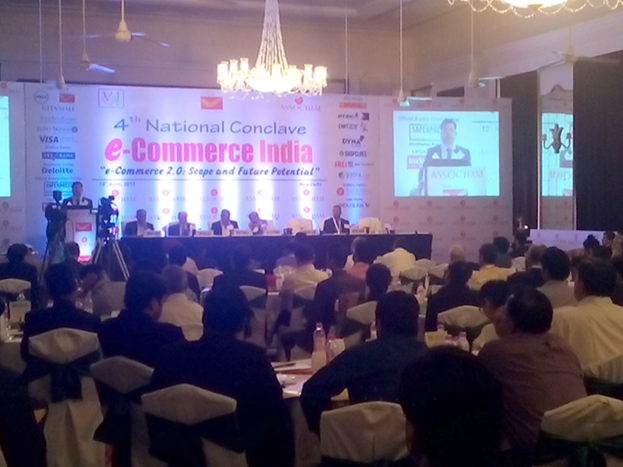
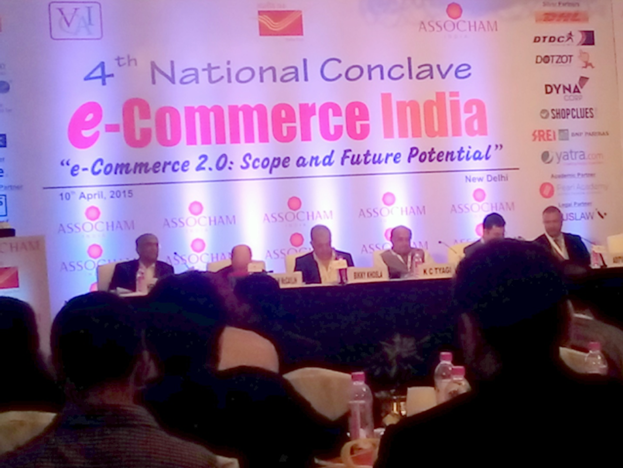
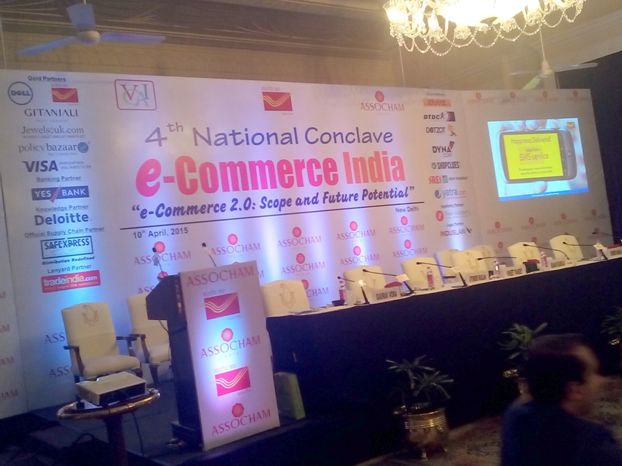
| The business & market research department is increasingly perceived as being not just responsible for the organization of research, but also for sharing and distributing knowledge and expertise in a credible and convincing way. |
Date:-28th Feb 2015- Pearson’s Business Conference
Date: 28th Feb 2015- Pearson’s Business Conference
Following were the panel members in the discussion:
|
S. No. |
Name |
Designation at UBS Oxford |
|
1 |
Dr. David Faulkner |
Chairman & Co-Founder |
|
2 |
Mr. Sachin Kharbanda |
Managing Director |
|
3 |
Ms. Aarti Babhoota |
Director – Operations |
|
4 |
Mr. Anant Nepalia |
Director – International Relations |
UBS Oxford is the management institution affiliated to University of Nottingham and located in the university township of Oxford in England. They have set up in collaboration with publishing & education giant Pearson’s a venture to enable Indian students to pursue a British degree MBA from India itself along with their respective undergraduate studies. Following are the key findings from the day’s discussions:
- This Distance MBA particularly suitable for engineering students; they can opt for online classes from 3rd year onwards, so by end of final year B.Tech, they will have the chance to complete this MBA also, thus they will have dual Indian B.Tech + British MBA.
- The British MBA will enable the student become eligible for jobs in the U.K. however there is no guarantee of employment in the U.K.
- Fee for the course is Rs. 4 lakhs only.
- For students from other streams of undergraduate study besides engineering, they can opt for the course from the 3rd year which is their final; thus by the time these students complete one year of work experience post first placement, then they can complete this MBA; Thus colleges can offer this as an integrated 4 year BBA(Indian) + MBA (British)
The house was opened in the end for discussion and the delegates posed their questions which the panel members answered to their best of their knowledge and information. This was concluded by a session of networking lunch.
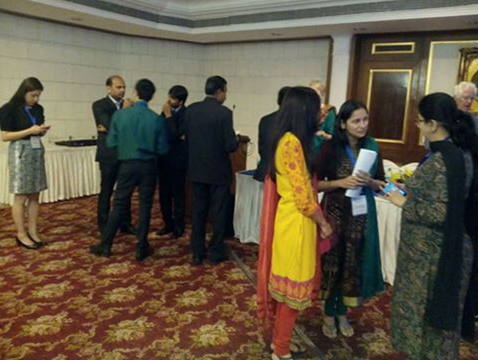
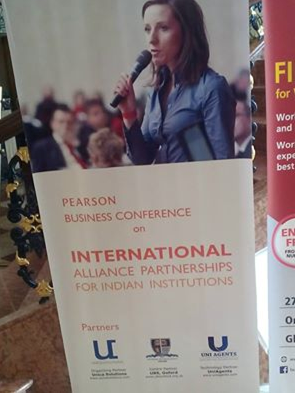
Date:-26th & 27th Feb 2015 -CII-Logistics Summit – “Mega Trends for Indian Logistics Sector in 2015-16”
26th & 27th Feb 2015 -CII-Logistics Summit – “Mega Trends for Indian Logistics Sector in 2015-16”
Segments
There were 2 segments of the Summit:
- Conference
- Exhibition
Details
Conference
On Friday, 27th February, the following sessions were held:
GST Impact & Preparing for Post GST Scenario
The table below lists the panel members in the discussion along with their respective roles in the session.
|
S. No. |
Name |
Designation |
Organization |
Session Role |
|
1 |
Mr. Anil Arora |
Member |
CII Institute of Logistics Advisory Council |
Session Chairman |
|
2 |
Mr. Srinath Manda |
Programme Head |
Frost & Sullivan- Transportation & Logistics |
Moderator & Lead Presenter |
|
3 |
Ms. Binaifer Jahani |
Director |
CRISIL Ltd. |
Lead Presenter |
|
4 |
Mr. K U Thankachen |
MD |
CRWC Ltd. |
Panel Member |
|
5 |
Mr. Kannan Vishwanath |
General Manager |
Jost Engineering Co. Ltd. |
Panel Member |
Goods and Services Tax (GST) has become a buzzword in the business and economics circles these days due to the great liberating potential that this tax has. This tax has the potential to become an all-inclusive one which will reduce the logjams presently so common across all state borders and business corridors. The entire panel felt that the tolls and VAT can get reduced and thus this is a positive step.
Impact of Revised Land Acquisition Act on Logistics Infrastructure Growth
The table below lists the panel members in the discussion along with their respective roles in the session.
|
S. No. |
Name |
Designation |
Organization |
Session Role |
|
1 |
Mr. Asokan Sattanathan |
Member |
CII Institute of Logistics Advisory Council |
Session Chairman & Lead Presenter |
|
2 |
Ms. Sweta Sultania |
VP |
Ernst Young- Transaction Advisory Services |
Lead Presenter |
|
3 |
Mr. Balwinder Singh |
Member |
CII Institute of Logistics Advisory Council |
Panel Member |
|
4 |
Mr. Barat Joshi |
Director |
Associated Container Terminals Ltd. |
Panel Member |
A picture shown in one of the presentations in this session perfectly illustrates the conundrums within which the logistics and the broader infrastructure sector needs to work within. There are always way too many stakeholders involved in any major project dealing with transport, roads, railways, cargo etc. The picture showed a person who is symbolic of the logistics sector, trapped in between two giant elephants. The person has to work within these 2 extremes to somehow deliver the results intended.
The old Land Acquisition Act was developed during the period of British rule and the primary tone of that act was to enable industrial development often at the cost of local people. But due to the marginalization of local people especially tribals and the inefficient method of compensation to the land owners, this act came under scrutiny. Thus there was a need for such a new act which finally came up in 2013.
The representatives from the logistics and supply chain industry feel that in either case, the impact on them is not very positive. Rather there still remain the extremely long lines at border crossings which render transport of goods from one part of the country to another rather inefficient and painstaking. One of the speakers questioned whether it would ever be possible in an ideal world to completely get rid of tolls. He also mentioned that the Goods & Services Tax (GST) was a positive step towards accomplishing this.
One of the speakers meanwhile stressed on the importance of Public Private Partnerships (PPPs) and how they in the future will be able to contribute much more to an efficient logistics sector. He was full of praise for the Golden Quadrilateral road that has been constructed to link the four major metropolitan cities from the four corners of India. He mentioned that the Golder Quadrilateral has reduced travel time by a substantial percentage.
Impact of Enhancing Regional Transport Links in South Asia
The table below lists the panel members in the discussion along with their respective roles in the session.
|
S. No. |
Name |
Designation |
Organization |
Session Role |
|
1 |
Mr. N Sukumar |
Member |
CII Institute of Logistics Advisory Council |
Session Chairman |
|
2 |
Mr. V Raju |
VP |
Adani Logistics Ltd. |
Lead Presenter |
|
3 |
Mr. Vivek Luthra |
Managing Partner |
Trade in EU |
Lead Presenter |
|
4 |
Mr. Pramod Sant |
VP |
Siemens |
Lead Presenter |
One of the most important sessions of the summit was this one which dealt with the transport links in the entire SAARC (south Asia) region and what impact those have on the logistics. One of the speakers posed a rhetoric question to the audience: he asked how many of us are wearing Bangladeshi T-Shirts. He further asked that among those who are knowingly wearing them, how many of us will proudly acknowledge so. Therein lay the paradox. The speaker stated that Bangladesh is a manufacturing giant especially in footwear and apparels. He explained how apparel and footwear giants got a lot of their products made in Bangladesh at cheap rates, then got them imported to North America or Europe at marked up rates and then re-exported to the other parts of the developing world including India at much pricier rates. Indians assumed these products were made in America or Europe whereas they were produced by our next door neighbouring country.
The panelists also spoke at length about the logjam regarding trade within the SAARC region and how it was actually cheaper to export to Europe or east Asia than south Asia as there were too many bureaucratic hurdles and much corruption on the borders. Also a very important point was made regarding the fact that trade over sea or air was more efficient than road as sea and air ports were linked with the bigger cities of our neighbouring countries as opposed to land borders where mainly small towns or border outposts only were present and these did not have modern amenities. Another faux pax in our relations within south Asia was highlighted by the fact that trade between India and Pakistan faces many hurdles and so it needs to be directed via places like Dubai.
Another key observation made by one of the speakers was that Afghanistan was a particular basket case within this group. While south Asia overall can be considered backward on most socio-economic parameters, Afghanistan’s statistics are particularly dismal. Thus the overall group’s bargaining power internationally comes down due to this particular case and even now very few business groups are seriously looking at trading ties with the country
Finally one more observation made by a speaker in this session was the peculiar case where international cooperatives are formed with the purpose of business and economic growth. Yet, it is politicians of respective member countries who sign deals, often with limited understanding of what is appropriate for the business perspectives. The speakers in the session feel that such decisions must be made by the business community and not the political ruling class as then politics overrules all other matters.
Impact of e-Commerce on Logistics Sector
The table below lists the panel members in the discussion along with their respective roles in the session.
|
<span”>S. No. |
Name |
Designation |
Organization |
Session Role |
|
1 |
Mr. Abhik Saha |
Member |
CII Institute of Logistics Advisory Council |
Session Chairman |
|
Director |
Benetton India Pvt. Ltd. |
|||
|
2 |
Mr. Sukhwinder Singh |
Senior VP |
Blue Dart |
Lead Presenter |
|
3 |
Mr. Ashish Chitravanshi |
VP |
Snapdeal |
Lead Presenter |
|
4 |
Mr. Alok Varman |
Head Operations |
Pepperfry.com |
Lead Presenter |
|
5 |
Mr. Ajay Rao |
President |
All Cargo Logistics Ltd. |
Panel Member |
Mr. Sukhwinder Singh started this session by pointing out to us a few usual headlines on a normal working day from the business paper- Economic Times. The idea of showing us the same was to make us realize how on any normal day, e-business or e-commerce has such a massive coverage on newsprint. And the graph is always on the up. Words like ‘rise, 30% increase, upswing, exponential growth’ etc. keep popping up throughout the business papers regarding these streams of business.
Another speaker mentioned how the return supply chain which never existed before has increased exponentially due to the concept of goods being returned by the end user. This has led to complications along the chain. The panel also discussed how today the likes of Snapdeal, Flipkart, Jabong and Amazon have become household names.
Exhibition
The exhibition was quite grand and had stalls from major players in the logistics and supply chain industries. Some of the players with stalls at the exhibition included:
- Adani Group
- Volve Eicher
- Agarwal Packers & Movers
- Air India Cargo
- Roambee
- Trans-reporter
- Bar Code India Ltd.
- VRL Logistics
- Distribution Logistics Infrastructure Pvt. Ltd.
- LMJ Logistics
- Watrana Traction
- Far Eye
- GITH
- Puma Lift Trucks Pvt. Ltd.
- Total Shipping & Logistics
- Geotrackers
- Schaffer
- Indian Railways Cargo
- TCI XPS
- TVS
The business & market research department is increasingly perceived as being not just responsible for the organization of research, but also for sharing and distributing knowledge and expertise in a credible and convincing way.
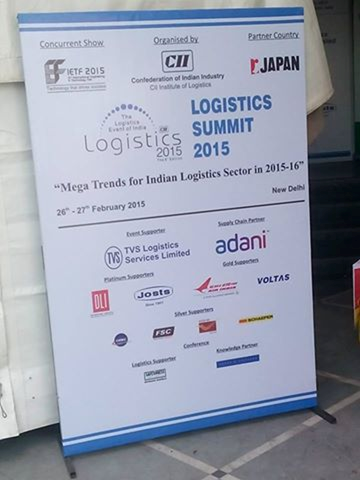
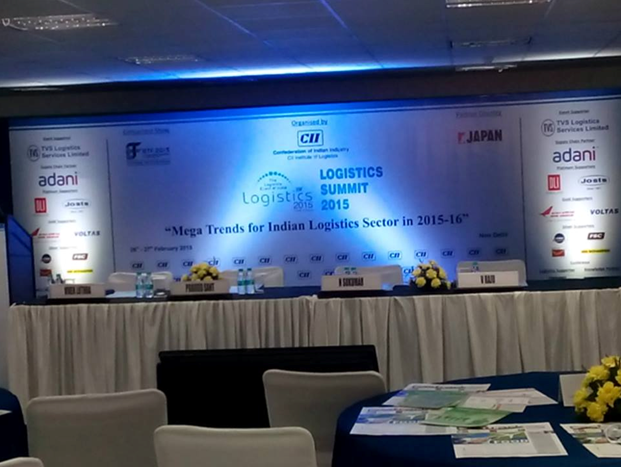
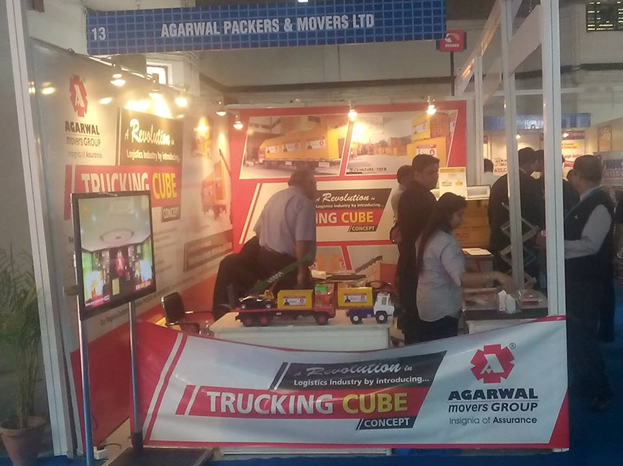
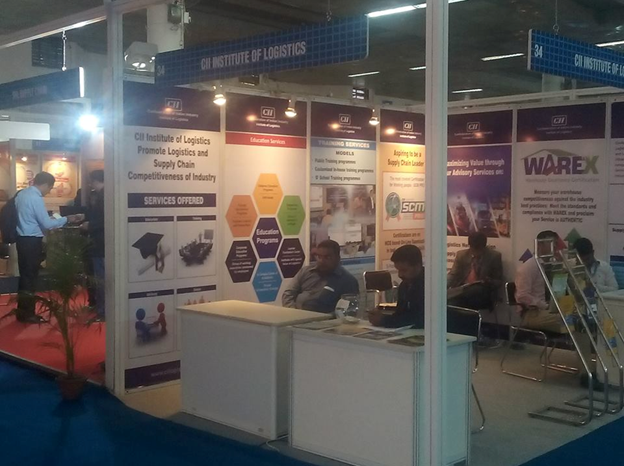
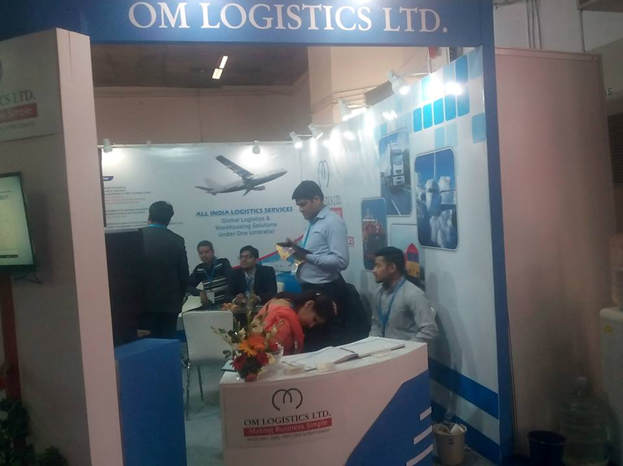
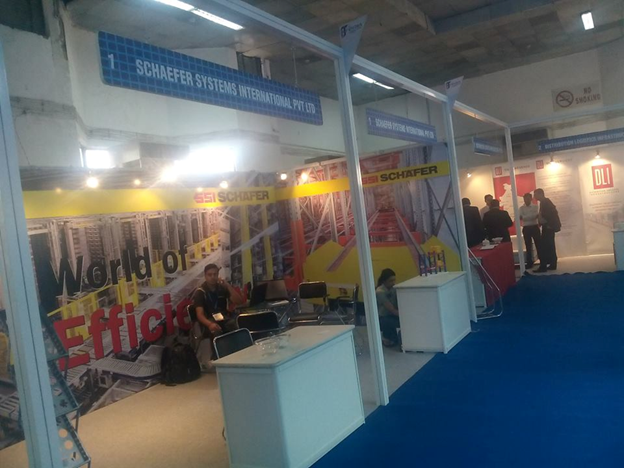
Date:-11th Feb 2015 -OTM Fair Report
Attendee: Mr. AritroDasgupta, Faculty &Programme Manager
OTM Travel & Tourism Fair (TTF) is India’s biggest outbound tourism fair. It has stalls of various key stakeholders within the tourism industry. State & national tourism boards, tourism publications, travel agencies, online travel portals, tourism services facilitators and hotel chains were all represented in this fair. Some of the key points as per the experience this year are as follows:
• The major focus was on B to B linkages. The majority of stall operators were rather bored to see queries by individual customers.
• International presence was comparatively lukewarm. Even within the limited response, half of it came via other south or south east Asian nations’ presence.
• Some state boards had big stalls including- West Bengal, Uttarakhand, Gujarat, Kerala & Karnataka.
• There was a substantial presence of hotel chains from the state of Jammu & Kashmir, perhaps reflecting the economic growth in that state.
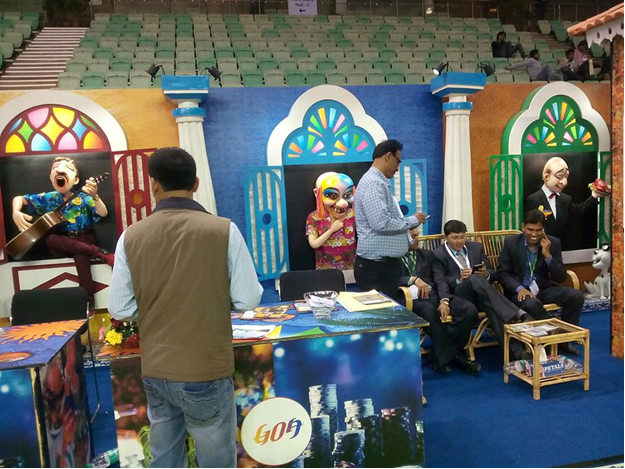
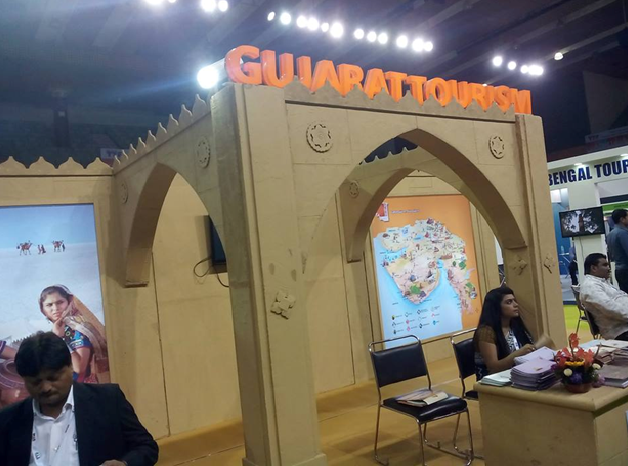
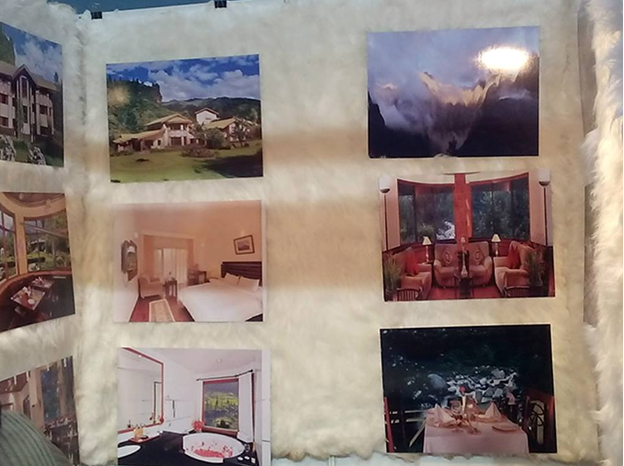
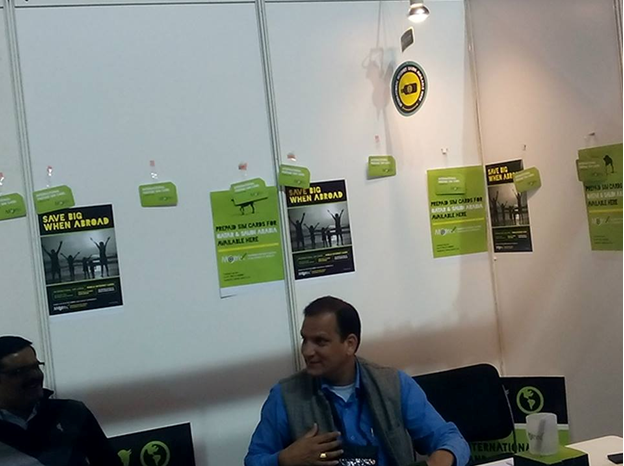
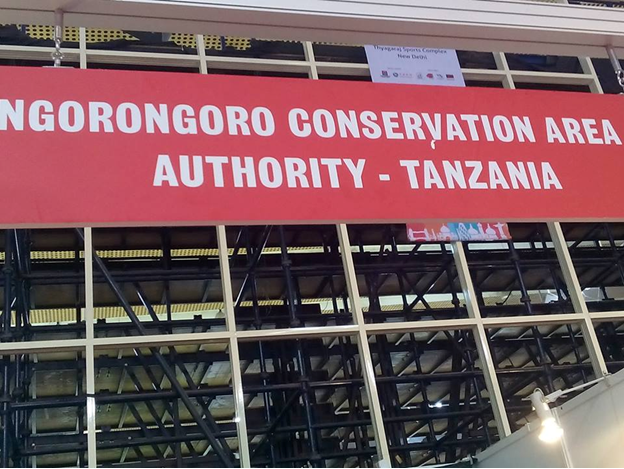
Date:-29th & 30th Jan 2015 – The Rural Olympics of Punjab
In the era of instant information, the art of reading long essays has become an even more niche activity than it ever was. Those articles have instead been replaced by a plethora of short blogs from various sites which provide instant, crisp information, though often exaggerating the subjects. This has led to the rise of websites like http://www.scoopwhoop.com/, http://www.buzzfeed.com/, http://www.storypick.com/and the blog section of Holiday IQ i.e. http://www.holidayiq.com/blog/. The travel sections in some of these sites have become especially popular. Thus today’s youth gets flooded with choices to read on topics like- “10 places to go in January”, or “5 things to do in Delhi” or even “7 things to do before getting married”. This trend has created a sort of mental ‘bucket list’ for the ‘readers’ who need to get as many times of these ticked off to be appreciated within the peer group. The rise of smartphones with high quality of cameras attached plus the ever increasing rise of the DSLR cameras has meant that travel has become a sort of narcissistic pleasure for many.
Among the advantages of this growing trend has been the highlighting of certain events which fell way off the tourist map until very recently. One such event is the “Rural Olympics” popularized across the internet as a sort of local level event participated in by simple villagers across idyllic rural fields. Thus I went to cover the event in search of villagers racing their bullock carts in the backdrop of Punjab’s famed mustard fields.
The reality proved slightly different & a tad disappointing though. The village Kila Raipur which has been hosting the event since 1933 is located about 20 kilometres off the city of Ludhiana. The combined impacts of the Green Revolution & the remittances from the NRIs in the English speaking world have meant that villages in Punjab have long abandoned the rural simplicity. Instead houses are all built of brick & stone, modern facilities including electronic gadgets are abundantly available while farming is largely aided by mechanized tools. Shops are full of the latest FMCG products which any large city in India will be having while farmers ride motor vehicles including some SUVs. In fact Kila Raipur’s population of around 17,000 people as per local records would not even categorize the place as rural according to the definitions set by the Planning Commission.
The other major deviation from the idyllic setting was the choice of sports. Some of the sports on display are not totally rural, though of course they are played in rural areas and are nonetheless fun to watch. The much vaunted bullock cart race which is the showpiece event was banned this year just before the start of the proceedings due to the apparent cruelty meted out to animals. This however did not stop the more urbane sports of horse racing or hound racing. According to one of the chief organizers of the event- Mr. Nikki Grewal- this was a particular blow to poor farmers as they were the stakeholders in bullock cart racing while the other sports are mainly patronized by rich land owning farmers or even urban patrons. The Grewal family has been in charge of these games since their inception in 1933, thus know every bit about these rural Olympics. Some even informed us that due to the growing presence of the event on the internet, the games have become politicized leading to jostling between parties, increased bureaucratization and finally fewer events. This apparent politicization even led to a delay in the opening ceremony to Day 2 of the games and thus not much was on display on the first day. The highlight of the first day instead became the presence of a group of foreign tourists who had come from Australia & USA to India and came to this village in search of the ‘real India’. Our host-Mr. Paramjit Singh- took those foreign ladies on a tour of the village to compensate for the absence of major sporting events on Day 1. In the village, they were shown the fields of mustard, sugarcane, wheat, poplar & teak. Particularly intriguing for them was the milking of the buffaloes and the way their dung (gobar) was used for energy generation. Mr. Paramjit Singh manages a page on Facebook to promote his village- https://www.facebook.com/pages/Kila-raipur-%E0%A8%95%E0%A8%BF%E0%A8%B2%E0%A8%BE-%E0%A8%B0%E0%A8%BE%E0%A8%8F%E0%A8%AA%E0%A9%81%E0%A8%B0-World-famous-village/209846272489514?fref=ts and thus was happy to take us on a village tour.
Day 2 was where the actual events started. There was the demonstration of Gatka, which is a martial art native to Punjab. There were hockey games, sprints and horse races as well. But the highlight of the day was the famous dog race. Hounds were made to run against others in pairs with the winners progressing to the next rounds in a pure knock-out contest. Hounds are a particular breed of dogs specialized in sprinting, no doubt aided by their streamlined figures. While the hounds sprinted at amazing speeds, what entertained the crowd most were their peculiar names. Dogs had colourful names like Big Casino, Turbo, Bruce&Gandam Style while bitches were named even more flamboyantly- Hot, Gold, Blackie, Noorie& ‘Tabahi’. There was also a display of men riding 2 horses together, and some camel sports. Some school kids showed their prowess with taekwondo as well.
We had to go further to Amritsar and beyond but the time we went at Kila Raipur was a true eye opener. While a lot of typical rural lore was missing, it was heartening to see the economic might of the area. We would love to come back here though with slightly altered expectations than the ‘8 things to see’ blogs recommend us to.
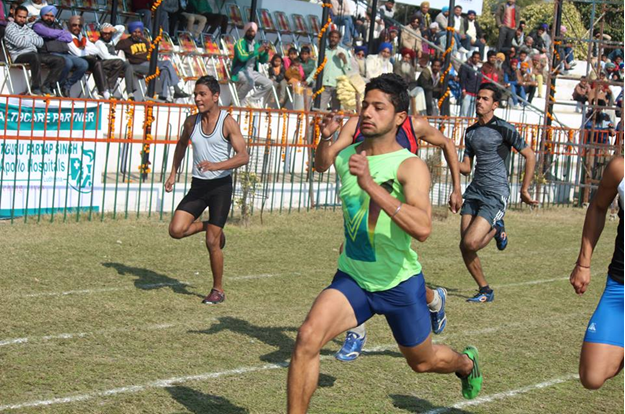
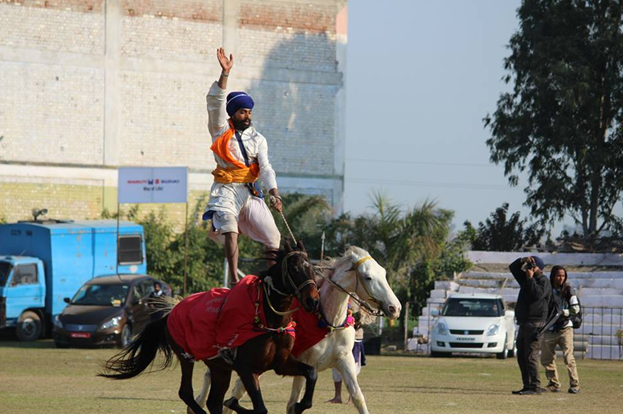
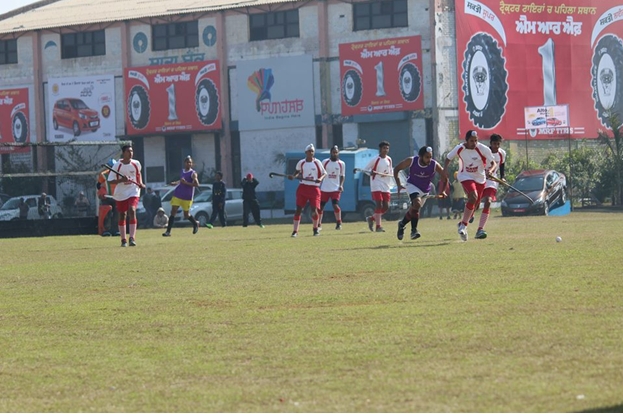


Date:- October 27th, 2016:Account Based Marketing
Key Speaker: Mr. Ross Macrae (Solution Consultant, Marketo) 27 Oct
Premise
Account Based Marketing (ABM) is the B2B marketing method by which marketers launch marketing solutions for specific agencies that are catering to individual organizations. Instead of devising solutions for customers, it is done for organizations which already have a specific target. In this write-up, we will explore the various ways in which ABM can be most effective as demonstrated by a top player in this segment- Marketo.
Methodology
ABM implementers focus on accounts that matter the most rather than a mass dispersion of content. There is an adage which claims that marketing owns the customer but sales owns the accounts. It is a B2B method so narrow. ABM also extensively uses marketing automation technologies top perform the best of digital marketing. Account Based Marketing flips the marketing funnel as illustrated in the following chart:
So as can clearly be understood, the traditional format looks at channeling mass audience using various techniques before finally filtering out the relevant leads. On the other hand, ABM looks at direct targeting of a handful of select clients, who then distribute the content to their filtered audiences. ABM follows a three pronged strategy. The overall learning curve is shorter in this process.
Advantages of ABM
The advantages of ABM are as follows:
$1· The overall ROI for marketing improves as only pre-selected clients are targeted; there is no major expenditure on the filtration process.
$1· Proper business analysis will reveal revenue generation across various sources; each source can be individually attributed for the bang-per-buck.
$1· Qualified lead generation takes place rather than any ad-hoc business strategy.
$1· Sales and marketing get integrated to work together.
Requisite ABM Capabilities
In order to best undergo ABM, certain pre-requisites are needed. The following illustration will best explain the process:
Thus as it explains, first of all, market research must be done in order to identify clients that would be ideal to pitch solutions to. Next up the right personnel need to be matched and for this top notch talent recruitment has to be executed. Content targeted needs to be personalized for each client. As there is no mass mailing, there is ample scope for individual content to be disseminated. Similarly even the channels to be used need to be custom developed. Social media is an apt tool to pursue within the present context. Once all this is done, work must begin on all these accounts. However, no progress can be properly identified without individual assessment of all accounts. Proper data and ensuring information needs to be maintained so that all accounts can be matched against revenues or other business metrics.
Three-pronged Approach
The three pronged approach can best be understood using the following diagram:
This rotates constantly. The moment one step is over, the marketing team has to optimize to start straight away the next one. Targeting can be done both vertically as well as sub-vertically. The scope can be divided as per sectors or geographies. Engagement too needs to explore all possible opportunities. The measuring stage needs to pose some crucial questions.
Now let us individually look at each of these stages.
Targeting must involve a segmentation of all the accounts. There must be an analysis on each named account. This analysis process is also a stage of discovery. A store must be maintained for the purpose of data warehousing. Leads must then be matched against their individual results.
Engagement with the audience is taking on an increasingly important role. A cross-channel engagement needs to take place. This includes a mix of online as well as offline methods. Each account must see a separate campaign. Filters or triggers must be attached to each of these campaigns so that proper metrics may be derived.
A lot of companies conduct their ABM using multi- point solution providers. They look at a bouquet of solutions rather than a single troubleshooter. This leads to measurement irregularities. A few critical questions need to be posed at this stage. First of all, the marketer must analyze how effective the entire campaign is going on. Then the decisions involved in the buyer journey must be mapped in detail. The best performers must be identified
A straw poll conducted during this webinar revealed that the majority of participants’ organizations were not undergoing ABM. This is an interesting indicator proving the massive potential for this stream to grow. Already, a lot of progress has been made, and ABM can be the marketing winner in the coming times.
Forum: https://www.marketo.com/
Date: Sept 6th, 2016:How to drive Sales from multi-device Shoppers
Key Speaker: Ms. Pamela Hazelton (Contributing Editor- Practical Ecommerce)
This write-up will explore key points discussed during the webinar. The main focus of the said webinar was to discuss ways in which shoppers using multiple devices can be leveraged to increase sales.
Premise
Shoppers these days browse various outlets online before making their decision. Such browsing does not take place over one device alone, but may be spread across using personal PC, office PC, mobile phone or tablet. A search which may begin randomly at office PC, may culminate using a tablet. Thus focus on people rather than devices is critical. Business analytics compiled by Google confirms that a whopping ninety percent of consumers are multi device users. A study meanwhile says that Americans on average these days own 4 different devices. Maximum sales searches begin on smartphones.
Shopping Windows
A shopping window is the timeframe needed to convert a lead into a final sale. Typically a search may begin early in the morning while traveling for work and may culminate post dinner using home PC. More complicated shopping windows involve several days of a week but again typically closing on weekends. This is the perfect time for organizations to push coupons. Customers typically browse through number of competitor websites during this process and this is the stage where companies can best utilize their digital marketing capabilities. Sometimes during this search process, users may even add more products.
The rise of multiple devices in the sales process has led to a significantly longer conversion window. A seamless transition across devices allows customers the time to optimize their efforts and thus reduced frustration levels. For the marketer this provides a window the opportunity to push remainder emails. Customers often get hassled by having to maintain count on various shopping carts, but this can be helped by the seamless transition discussed about. That is where marketers can step in to ease out the process.
A big challenge as well as opportunity which such long windows present to marketers is the fact that an accurate inventory control needs to be maintained. An item which may have plentiful quantities still in stock may deplete within few days, thus presenting a totally different picture to the customers. Fluctuations in price may lead to further confusion but also benefits to either party. Customer browsing patterns even casual must be tracked as this provides critical business intelligence. The time and day of purchase will help marketers push messages accordingly. For this, cyber security must be assured as carts may be created across several devices leading to risk of security leakages.
Device Conversion Ratios
Certain points have emerged out of marketing research conducted by Google. They are as follows:
A common perception is that tablets convert best while desktops do better business than mobile phones. While this may be true, it overlooks the fact that there is a far higher amount of search using desktops than tablets, which may account for the relatively low conversion rate of the former. The overall numbers in terms of both volume and revenue shows desktops as the best final source.
Maximum users of m-commerce are on Apple’s I Phone or I Pods but Samsung’s Galaxy S6 gives best conversion rate.
Responsive Design
This concept is that which dictates that any e-commerce website must be responsive to customer needs. A lot of companies commit this mistake of developing mobile apps for their products yet ignore the development of a user friendly mobile site. The latter is essential as individuals cannot keep installing large number of apps. So not having a good mobile site will instead stimulate the potential customer to discard the brand altogether.
Cart Abandonment
An unfortunate consequence of present trends is that customers often load up their carts to eventually discard them a few days later. During this interregnum between filling up the e-cart and making the payment, Push messages may be used effectively. The customer must also be educated about potential price fluctuations. Email reminders may also prove effective means of communication during such periods. Most importantly, the customer must be made to realize that products once loaded may see their stocks go empty if there is delay in final decision making. This is a common occurrence and may lead to customer dissatisfaction through no fault of the e-commerce platform.
Choosing the Device
While it is understood that there must be more focus on the people rather than devices, basic understanding of their individual purposes is a must. Desktops are used for deep browsing, shopping or research as opposed to lighter levels with smartphones while tablets fall in the middle category in this regard.
Myriad changes have taken place in the sales process including within online commerce. The longer shopping window and the use of multiple devices are two such. They provide challenges and opportunities for marketers to leverage.
Device Conversion Ratios
Certain points have emerged out of marketing research conducted by Google. They are as follows:
A common perception is that tablets convert best while desktops do better business than mobile phones. While this may be true, it overlooks the fact that there is a far higher amount of search using desktops than tablets, which may account for the relatively low conversion rate of the former. The overall numbers in terms of both volume and revenue shows desktops as the best final source.
Maximum users of m-commerce are on Apple’s I Phone or I Pods but Samsung’s Galaxy S6 gives best conversion rate.
Forum: http://www.practicalecommerce.com/


